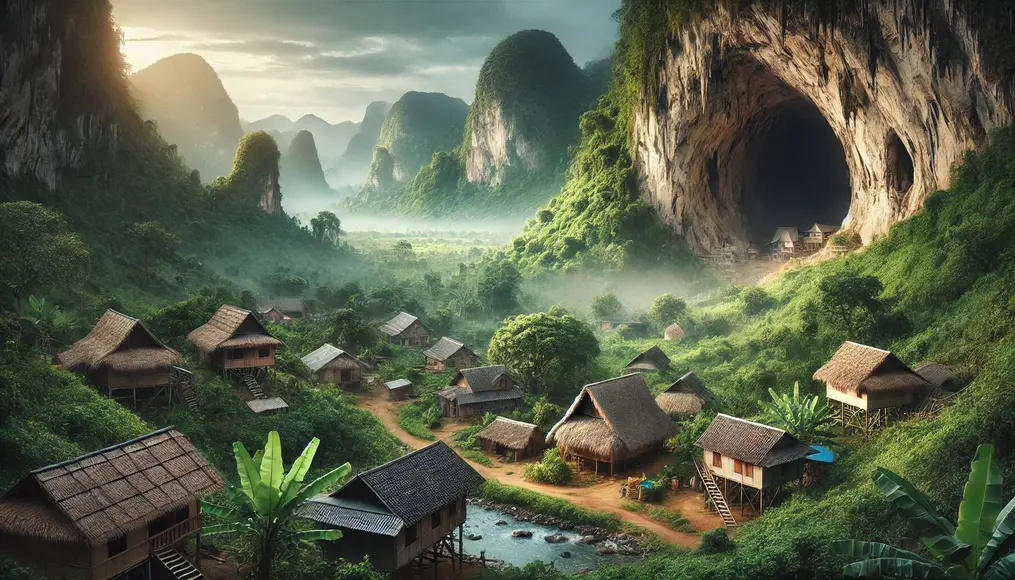Earth, a vast and mysterious planet, holds countless unexplored spaces yet to be discovered.
Among them, the deep underground caves are a gateway to understanding unknown nature, life, and even the enigmas of history.
Many of these caves remain untouched, sparking our imagination and driving our desire for scientific exploration.

Discovery and Exploration of Untouched Caves
The focus on untouched areas of underground caves gained momentum after the mid-20th century.
Notably, the 1991 discovery of Vietnam’s “Son Doong Cave” drew global attention with its scale and mystique.
Many parts of this cave remain unexplored, revealing an astonishing world that continues to surprise us.

The Background of the Cave’s Discovery
The discovery of Son Doong Cave was purely accidental, thanks to local residents.
However, the official exploration began over 20 years later.
When the exploration team ventured inside, they encountered an astonishing underground space.

The Journey to Discovery
The cave’s existence was primarily known through local folklore.
Legends surrounding Son Doong Cave had been passed down through generations, eventually leading to its exploration.
Such local knowledge often provides valuable clues for cave exploration worldwide.

Advancements in Cave Exploration Technology
Recent technological advancements have taken cave exploration to new heights.
The use of drones and LIDAR (Light Detection and Ranging) allows mapping of areas previously deemed inaccessible.
This technology accelerates the discovery of internal structures and unexplored spaces within caves.

Geological Mysteries and Uniqueness of Caves
The formation of massive caves involves millions of years of natural processes.
Limestone layers are eroded by water flow and tectonic activity, creating vast underground spaces.
These geological phenomena prompt us to reconsider Earth’s history and its dynamic processes.

The Environment Inside the Caves
Inside caves, an entirely different environment from the surface unfolds.
High humidity, low oxygen levels, and absolute darkness create harsh conditions for life.
Nevertheless, the caves host organisms with extraordinary adaptability.

Unique Ecosystems
Son Doong Cave, for example, is home to unique ecosystems previously unknown to science.
Microorganisms that thrive without light and organisms that derive nutrients from minerals inhabit the cave.
The study of these organisms has implications for exploring extraterrestrial life.

Secrets of Water Systems and Minerals
Cave water systems are often connected to external rivers or underground streams.
This water usually contains rare minerals, drawing the interest of geologists.
If connected to other caves, these water systems open new possibilities for exploration.

The Hidden Mysteries of Untouched Areas
Untouched areas of caves hide mysteries that go beyond geology and biology.
Ancient ruins, magnetic anomalies, and unconfirmed energy phenomena attract multidisciplinary interest.
Regions where unexplained phenomena occur continue to inspire researchers worldwide.

Connections to Ancient Civilizations
Many caves contain remnants of ancient civilizations.
These were not just dwellings but also sites for religious rituals and astronomical observations.
Artifacts and wall paintings within caves serve as invaluable evidence of ancient thought and beliefs.

Unexplained Energy Phenomena
Some caves exhibit energy phenomena that defy scientific explanation.
Magnetic anomalies and mysterious lights are subjects of ongoing scientific inquiry.
These phenomena could provide insights into Earth’s energy cycles or unknown natural processes.

How Cave Exploration Shapes the Future
Cave exploration is more than just an adventure; it holds the key to Earth’s future.
It reveals new energy resources, undiscovered ecosystems, and clues about human origins.
Through cave exploration, we deepen our understanding of Earth and chart new paths for the future.
We’d love to hear your thoughts and impressions about the untouched areas of underground caves. Share your ideas in the comments below!




Comment